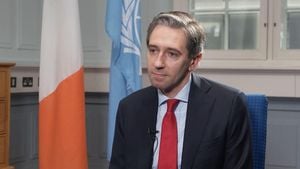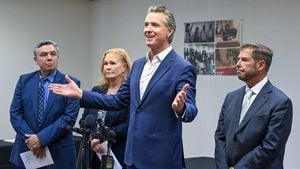NASA made a pivotal decision over the weekend, declaring Boeing’s Starliner spacecraft, which has been fraught with technical troubles, will return to Earth empty after astronauts Butch Wilmore and Suni Williams will stay aboard the International Space Station (ISS) until at least February.
NASA's announcement has its roots deeply embedded within the years of delays and mounting issues Boeing has faced with the Starliner project. Initially meant to be the crown jewel of Boeing’s spacecraft offerings for NASA, the Starliner has instead become emblematic of the company's challenges within its aerospace sector.
Wilmore and Williams, seasoned astronauts and veteran Navy veterans, were anticipated to return to Earth aboard Starliner following what was supposed to be a week-long test flight. Since launching on June 5, the mission transformed from a basic test flight to extended stays due to complications including helium leaks and thruster failures. Instead of heading home directly, the duo is set to ride back on SpaceX’s Crew Dragon spacecraft, which NASA approved amid significant safety concerns about Starliner's performance.
NASA officials voiced apprehensions earlier this month following the release of a concerning report by the agency's inspector general. This report shone a spotlight on the spiraling budget overruns and technological failures not just limited to the Starliner, but also impacting Boeing’s work with the Moon-bound Space Launch System. The total cost of the Starliner project has exceeded an alarming $1.6 billion since its inception, and recently, troubling leaks and equipment malfunction raised enough alarms to keep Wilmore and Williams grounded longer than anticipated.
Making matters worse, Boeing did not participate during NASA’s announcement press conference—creating speculation about the company’s internal confidence about the spacecraft’s reliability. A spokesperson for Boeing spoke vaguely, highlighting safety protocols and the overall mission focus, without directly addressing the potential for the project’s cancellation, which has become increasingly speculated among analysts.
This news follows on the heels of comments from former NASA Deputy Administrator Lori Garver, indicating uncertainty about whether Boeing would remain involved with NASA's Commercial Crew program. With Starliner’s future unclear and increases of competition from private companies such as SpaceX and Jeff Bezos's Blue Origin, experts are weighing how much longer Boeing can contend.
Adding to the drama of the Starliner episode, it appears the competing Crew Dragon spacecraft has swiftly established itself as NASA’s prime choice for sending astronauts to the ISS. SpaceX has been credited with executing successful missions and ferrying astronauts back and forth since its first manned flight took place back in 2020. This has only underscored Starliner's troubles, raising questions about the effectiveness of Boeing's management of the project.
The ISS is expected to retire by 2030, and with Starliner already five years behind its development schedule, it’s uncertain whether Boeing will catch up. There's increasing concern about whether the Starliner can play any significant role moving forward, especially since the agency is actively seeking alternate options for transporting astronauts.
Wilmore and Williams, amid this technical turmoil, have continued to contribute to scientific research and maintenance aboard the ISS. Their extended stay has allowed them to assist with over 42 experiments, showcasing the importance of maintaining strong human presence aboard the orbital laboratory.
Reflecting on the difficulties Starliner is facing, NASA Administrator Bill Nelson cited lessons learned from two past shuttle disasters, noting particularly the necessity of prioritizing astronaut safety above all else. According to Nelson, the initial mission planning underestimated the risks involved with the Starliner, necessitating their cautious approach.
When NASA’s program manager Steve Stich addressed concerns about the thruster failures, he highlighted how significant this malfunction could be. The thrusters are not mere instruments; they are integral for maneuvering, docking, and ensuring safe re-entry. A misalignment during the re-entry phase could potentially lead to catastrophic consequences.
The situation with Starliner has reignited discussions about NASA's strategy to involve multiple private companies to launch astronauts. While SpaceX has taken flight successfully with its spacecraft, Boeing’s struggles leave many analysts pondering whether the company might need to withdraw from crewed space travel altogether, letting SpaceX, which has proven success, lead the charge onward.
Despite the overwhelming setback with Starliner, there remains hope within NASA for the spacecraft’s future. Administrators have stated they are committed to fixing the spacecraft's technical problems and getting it back on track for another chance with crewed missions. Some experts are holding their breath, contemplating whether Boeing will work out modifications to re-establish trust with NASA and the public.
Overall, the situation with Boeing’s Starliner remains tenuous and complex as it signals both the significant technological achievements—for Boeing and space travel—alongside the catastrophic risks tied to human space exploration proceedings. The world watches as NASA and Boeing navigate through this storm, hoping to turn failures and mishaps like these, eventually, back around



